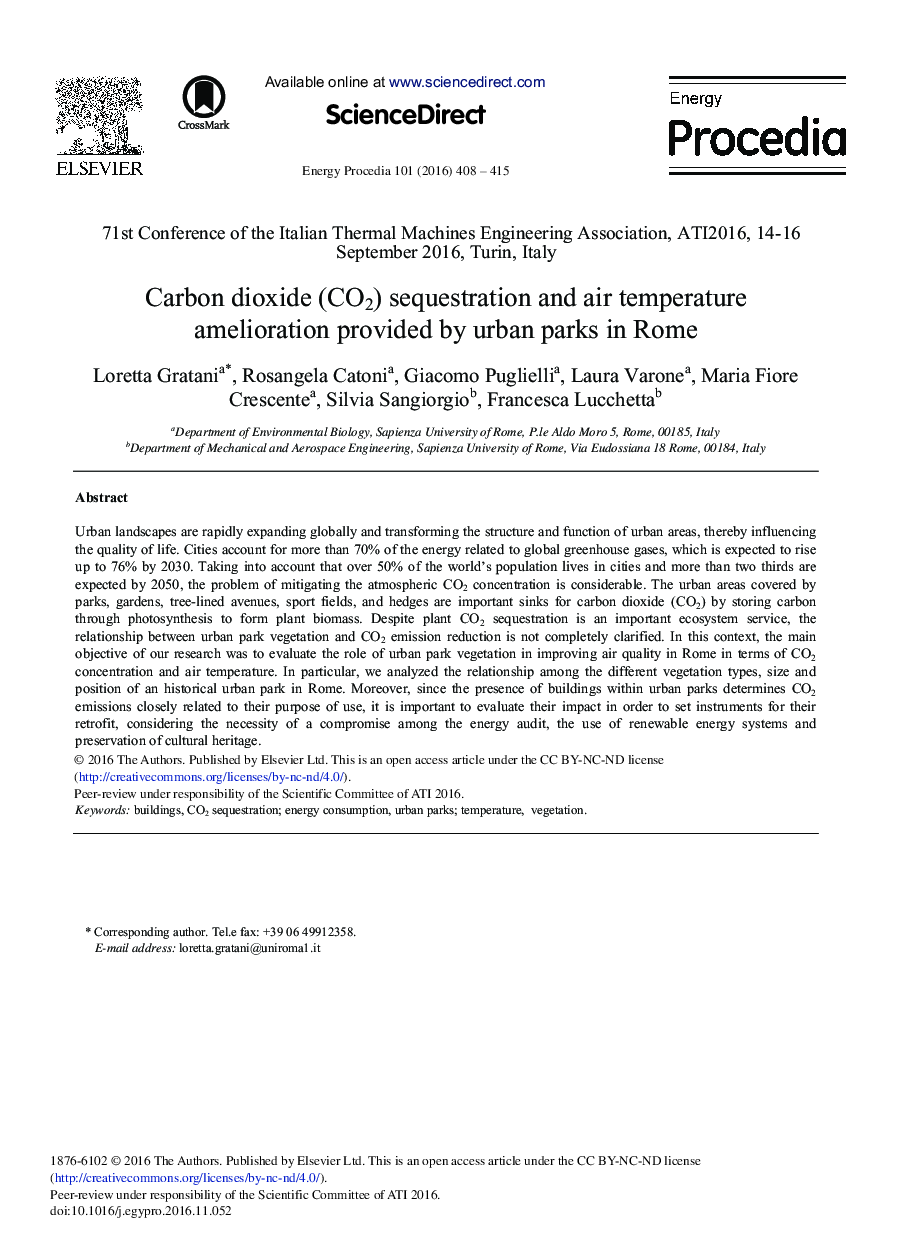| Article ID | Journal | Published Year | Pages | File Type |
|---|---|---|---|---|
| 5446480 | Energy Procedia | 2016 | 8 Pages |
Abstract
Urban landscapes are rapidly expanding globally and transforming the structure and function of urban areas, thereby influencing the quality of life. Cities account for more than 70% of the energy related to global greenhouse gases, which is expected to rise up to 76% by 2030. Taking into account that over 50% of the world's population lives in cities and more than two thirds are expected by 2050, the problem of mitigating the atmospheric CO2 concentration is considerable. The urban areas covered by parks, gardens, tree-lined avenues, sport fields, and hedges are important sinks for carbon dioxide (CO2) by storing carbon through photosynthesis to form plant biomass. Despite plant CO2 sequestration is an important ecosystem service, the relationship between urban park vegetation and CO2 emission reduction is not completely clarified. In this context, the main objective of our research was to evaluate the role of urban park vegetation in improving air quality in Rome in terms of CO2 concentration and air temperature. In particular, we analyzed the relationship among the different vegetation types, size and position of an historical urban park in Rome. Moreover, since the presence of buildings within urban parks determines CO2 emissions closely related to their purpose of use, it is important to evaluate their impact in order to set instruments for their retrofit, considering the necessity of a compromise among the energy audit, the use of renewable energy systems and preservation of cultural heritage.
Related Topics
Physical Sciences and Engineering
Energy
Energy (General)
Authors
Loretta Gratani, Rosangela Catoni, Giacomo Puglielli, Laura Varone, Maria Fiore Crescente, Silvia Sangiorgio, Francesca Lucchetta,
